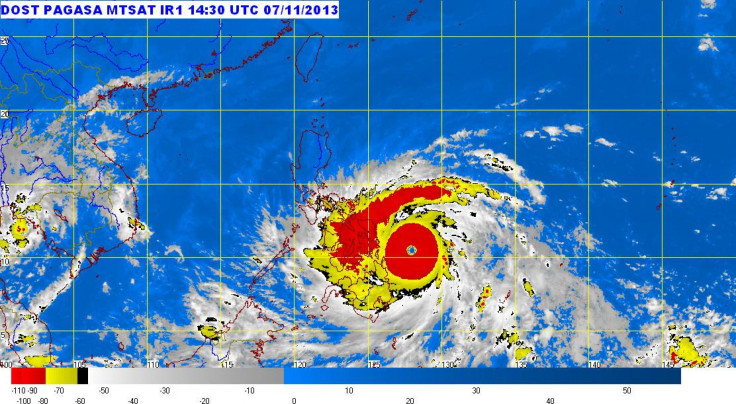Super Typhoon Haiyan, Strongest Hurricane Of The Year, Barrels Toward Philippines

Super Typhoon Haiyan is barreling toward the Philippines as one of the strongest storms in recorded history threatens the lives and property of millions of residents of the island nation.
The Category 5 hurricane, called Typhoon Yolanda in the Philippines, is currently producing sustained 190 mph winds and gusts as fierce as 230 mph, according to CNN, which reports that it is being described as the year's worst storm anywhere on earth, as well as one of the strongest of all time.
The Philippine national weather service, PAGASA, has recommended that people living in vulnerable areas may be subjected to flashfloods and landslides, and storm surges of up to seven meters, urging them to find higher ground.
The storm will likely make its way across the central Philippines late Thursday and early Friday as a Category 4 storm, according to PAGASA. Rains are currently sweeping across more than two-thirds of the country as the hurricane approaches landfall.
Haiyan is the fourth typhoon to hit the Philippines this year, The Weather Channel reported, a busy hurricane season coming on the heels of Typhoon Bopha, which killed more than 1,000 people and caused vast damage last December.
President Benigno S. Aquino III warned residents about the seriousness of Typhoon Haiyan via a national television address on Thursday, making a plea for people to evacuate the areas expected to be hit the hardest, and to prepare for the worst.
"Let me repeat myself: This is a very real danger, and we can mitigate and lessen its effects if we use the information available to prepare," he said, according to CNN.
The U.S. Joint Typhoon Warning Center, based in Hawaii, said Thursday that the storm is moving northwest at about 22 knots and "has maintained a sharply defined eye with multiple concentric rings and a deep convective eye wall ... Due to the extremely favorable environmental conditions and recent intensification, the system is expected to remain at super typhoon intensity over the next 24 hours" NPR reported, adding that the storm will continue on to Vietnam after tearing through the Philippines.
© Copyright IBTimes 2025. All rights reserved.





















